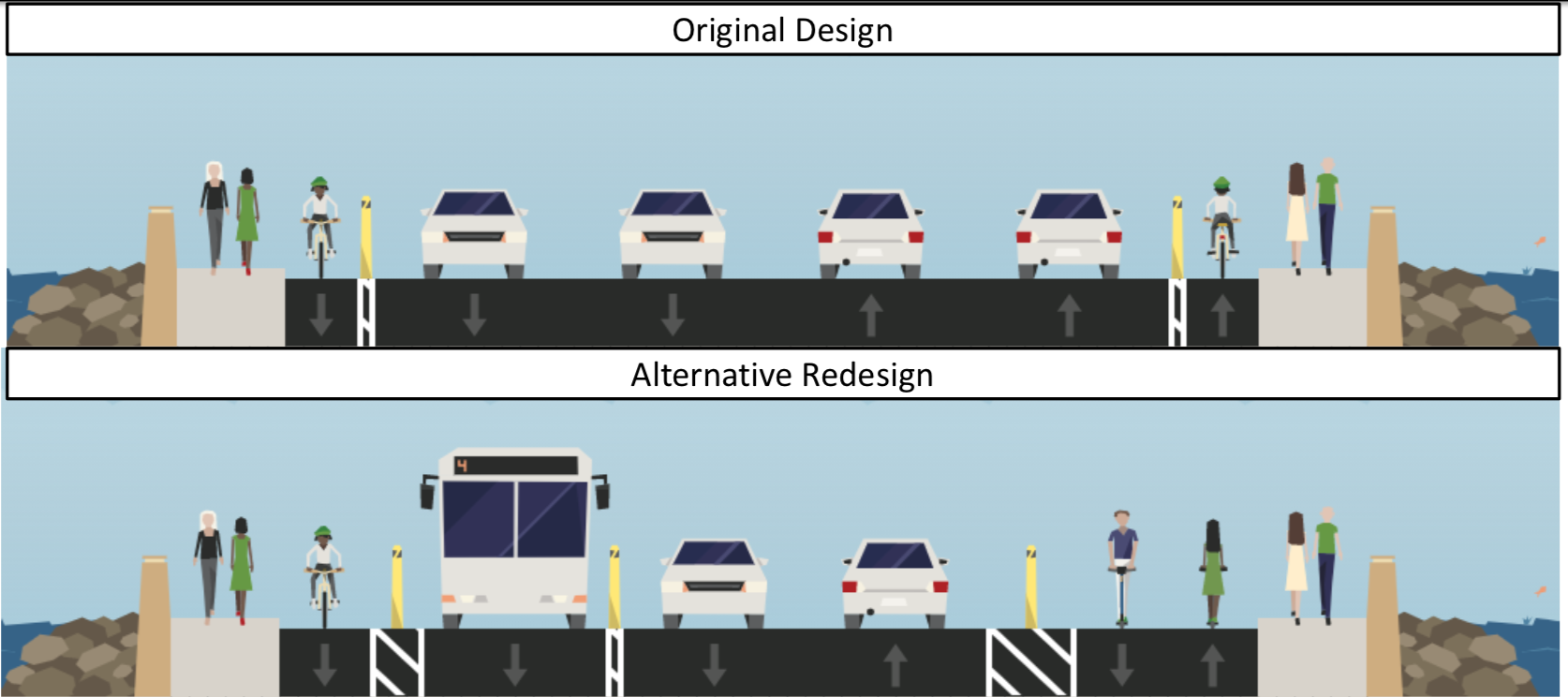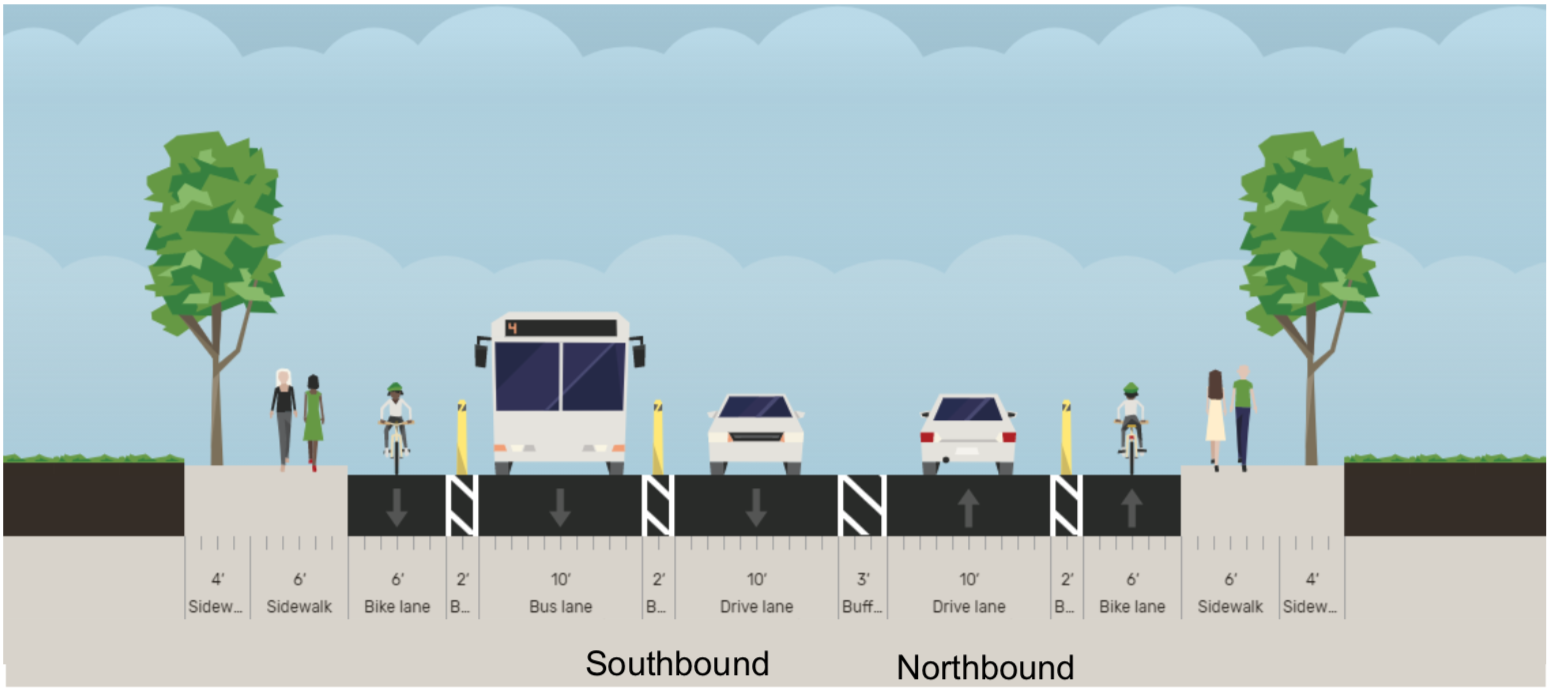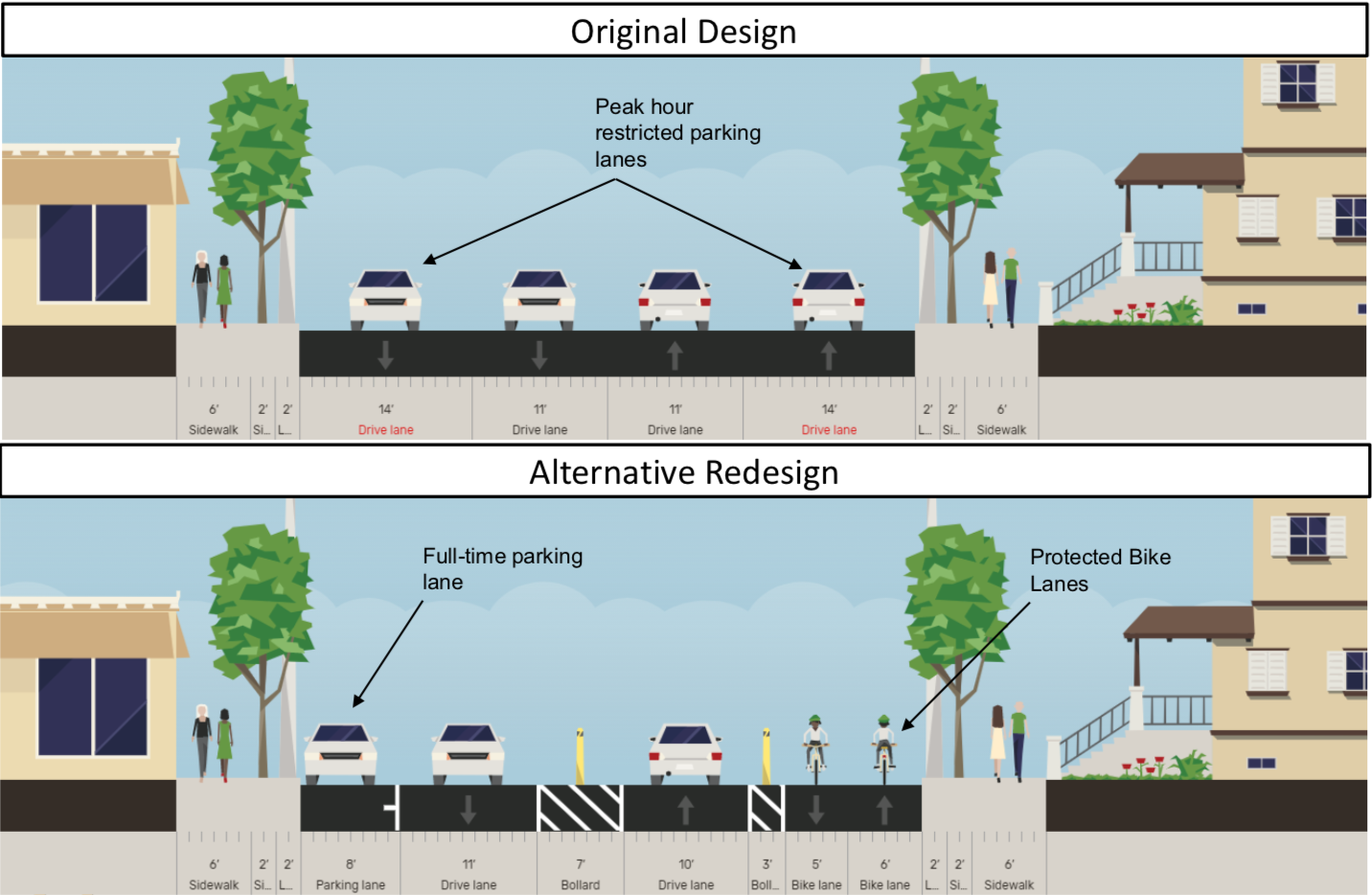The past two weeks, our Policy Director Jed answered your questions on Instagram. In case you missed it, here’s a recap of the Q&A. We’ll be hosting these Q&A sessions every other week, so you can join us to ask your policy questions on Instagram next on March 2-3!
What’s stopping us from stenciling look out for cyclists and other visibility stencils on streets and sidewalks?
Nothing! The Department of Transportation has a Right-of-Way Community Art program that you can apply for, but examples of unpermitted DIY stencils are all over Baltimore. (Like all of the trail markers!)
Rate the maglev on a scale of one to ten.
One is the worst right? One. But seriously, fix what we have first. (Read more on my twitter).
Explain the City’s process of evaluating removal of parking lanes for bike lanes.
The new Complete Streets manual ranks the overall roadway priorities as follows: 1) Walking, 2) Cycling/Public Transit/Micromobility, 3) Taxi/Commercial Transit/Shared vehicles, 4) Single occupant automobiles. It also creates ranked priorities of street zones based on land use/road typology. The full rationale is explained in the manual, which you can read here.
What are some advocacy materials for bike lanes on major arterials? Safe, direct routes even if it’s not cheap or easy!
We advocated for the adoption of the Baltimore City Separated Lane Network Plan in 2015. It measured traffic stress levels of city streets to make a base map of where protected lanes were needed on arterials or elsewhere. From ti we got a “skeleton” fo separated lanes that would connect 85% of Baltimore neighborhoods.
The whole thing — connecting 85% of Baltimore neighborhoods to high quality bike facilities — would cost less than we usually spend on a single road project. We want it built.
What is a “high quality bike facility”?
Something that people ages 8 to 80 feel safe riding on. Or in other words, something people of all ages and abilities will use.
What are some of Bikemore’s policy and project priorities of 2021?
Reduce or eliminate car parking requirements that make housing unaffordable. Allow denser housing so people can more easily access opportunity. Get city employees transit passes or let them take cash in their paycheck instead of a parking subsidy. Pass the transit safety & investment act in Annapolis, fully funding repairs to our failing MTA system. 40% of MTA riders are essential workers, nearly the highest % in the country. Our essential workers and all transit riders deserve a safe and reliable system.
Advocate for the design and construction of the Greenway Trails Network and the Separated Lane Network
What happened to all the Slow Streets signs?
The City has removed the barriers during program evaluation, in part because they were poorly designed and easy to destroy. The City has allocated funding to buy more substantial/durable barriers for the Spring. The evaluation will focus in part on building community support to reduce vandalism.
What are some of the biggest lobbying priorities that Baltimore residents can engage with right now?
Tell Senator President Ferguson and your State Senator and Delegates to support eh Transit Safety & Investment Act. You can do so here:
Support legislation that increase density and housing affordability by allowing apartment conversions and undoes policies routed in explicit racism and anti-renter sentiment.
How can we streamline the process of building on-road facilities corresponding to the new portion of the Jones Falls Trail to Mt. Washington?
We’re working with the East Coast Greenway on ideas for connections on street in Mt. Washington. Before the Complete Streets law existed, community members fought building separated lanes on Kelly Ave. The law would prevent that. But only when a new project/resurfacing comes up.
Lake Montebello has been an absolute delight without cars. Can/will it say that way forever?
Yes it can! Both are supportive of keeping the closure.
What are the most immediate improvement we sill start seeing as a result of Complete Streets?
Already we’ve seen:
President St. lane upgrade with flex posts
Greenspring Ave upgrade with flex posts
Better crosswalks by default
Soon:
What will Complete Streets make possible in Baltimore that wasn’t before?
A ton. Everything in this manual is now enforceable by law. Before it was enforceable by whomever yelled the loudest. Here’s an example: specific guidelines for bike facility selection we now must follow (see page ___). Legally enforceable, data-driven guidance.
Can we be optimistic that the pace of street redesigns will pick up in the next few years?
Definitely, it’s a priority of Mayor Scott. DOT has allocated real money to vision zero and quick builds to improve safety. And now it’s the law.
Any updates on the Big Jump?
City evaluation report is due soon. City says it shows much higher usage than parallel routes and has no impact to travel times for cars. A total redesign plan is coming, and the barriers will be upgraded to concrete mid-term when digging in the road is done.
Is there hope for a more bike-friendly 33rd St.?
Yes! DOT has a grant to begin design on two Olmsted Parkways (33rd St. and Gwynns Falls Parkway) this year!. The Olmsted Parkways were intended to connect people to nature and parks by all modes of transport. Median Pathways and wide sidewalks were standard since most people din’t drive at the time.
Baltimore’s Olmsted Parkways plan came to fruition at the peak of early automobile growth. Grand designs were scaled back tot he corridors we see today. But historic documents can show us the Olmsted intent. And like the firm’s other projects nationwide, they were “complete streets.” The Gwynns Falls Parkway plan included a median trail for walkers, bikers, and people on horseback to safely travel from Leakin Park to Druid Hill Park.
On 33rd St., property owners demanded a scaled back plan from the original grand vision. On a field visit, Olmsted architect PR Jones scaled back the original plan. But even in the scaled back version, his field sketch included a trail through the center of a 40 ft median.
The goal of DOT design work will be to build a full 35-mile trail loop, connecting our major parks like the original Olmsted vision. 33rd is a key component. The trail didn’t get installed 100 years ago, but we can fix that now.
What’s the potential for better snow removal on trails? Bike lanes have been pretty good this year.
We have the technology available! But a lot of the trails are Rec and Parks responsibility, and they have severe resource constraints. We’re advocating DOT take on more trail clearance
What can be done about all the vehicles parking in the Maryland Ave bike lane?
Enforcement has been pretty spotty because of COVID. 311 every incident you see.
How can I get involved in bike advocacy?
Keep following us and sign up for emails on bikemore.net! We post asks regularly and will have events to gather when it’s safe.








